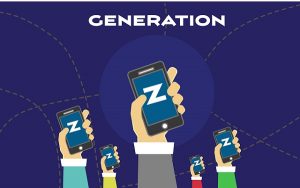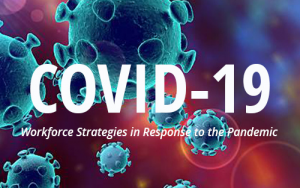
What’s the Vibe with Generation Z?
Samantha Badr
You know you’re old when the young kids in the neighborhood running on your lawn begin to bother you. Except this isn’t your lawn, it’s the office – and the young kids on your lawn are actually the new recruits in your organization. Move over everyone, here come’s Generation Z, and they’re not going anywhere. So, what do we do now? Better yet – what are they even saying half the time?
Even as a Millennial, I find myself perplexed at the newest generation. Just like any group entering the workforce, Gen Z comes with a certain style – including new terms/abbreviations, a different work ethic, and a distinctive learning style. HR already knows that one size does not fit all – and it looks like we need to go back to the drawing board to figure out how to attract and retain Gen Z. Before we get started, check out this clip from “The Office”.
Now that we got the jokes out of the way, let’s get down to business. For starters, Generation Z includes anyone born between the years of 1995 to 2012. So the next time you spot a new applicant aged 24 or younger – just know, you’re in for a treat. One thing is for sure – Gen Z makes no apologies for what they expect from their employers and a lot of companies are finding that they might have to shift their practices to suit them.
When it comes to finding a place of employment, Generation Z requires that organizations are socially aware, flexible, have a work/life balance, and provide opportunities for growth. When attracting candidates, companies must make sure to outline their commitment to social responsibility on both equity and environmental issues. It’s critical that recruiters demonstrate what their organization has done on these issues, and not just show a cute little paragraph from the CEO on their company’s website. Flexible work options are also expected these days. Most Gen Z workers prefer to work from home so it’s very likely that potential candidates will ask organizations if they have the option to do so. Since work/life balance is a requirement for Gen Z’ers, it is probable that they will align with companies that provide time off for doctor’s appointments or other such emergencies. Pro-tip for HR recruiters: stress the importance of the role your organization plays in work/life balance and how employee well-being is most important. Companies should make sure to outline career growth opportunities within their organization as well. Since bouncing from company to company is not on their agenda, Generation Z candidates will likely join and stay at a company if there are opportunities for advancement.
Similar to training other generations, Gen Z’s needs for training might look a little different than usual. Generation Z is a diverse generation, and they anticipate the same diverse environment at the organization they work for. Gen Z enjoys feeling part of a team – so different cultures, views, and skillsets from a diverse workforce will only further their productivity. Because of the pandemic, many organizations had to be creative in engaging their staff, and the same goes for this new generation. Companies should make it a point to have weekly/monthly meetings to gain feedback from employees and form connections. Mentorships could be another essential way to mix and match different generations on the same team. New candidates will thrive if they feel supported by a peer or employee with more experience. Oh, and one more thing – Gen Z loves the opportunity to rotate through several jobs during their first few years with a company. This gives them the chance to find what they like the best and the path they want to pursue. If an organization is willing and able, job rotation can attract and retain Gen Z.
As the past two years have demonstrated, it’s getting “real” out there. The world will keep on evolving and we must embrace it. Change is inevitable and it’s okay, guys. Everything will work out. It seems like the tasks never end for HR professionals, but we can’t avoid the storm of Generation Z waiting to turn our offices upside down. Do yourself a favor and brush up on some terms the “youngins” like to use – it might help you in the future.
